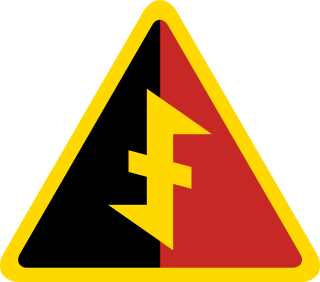Course
Evacuation order
The order to evacuate was issued on Saturday 23 September by the Wehrmacht . On Sunday 24 September the leadership of the Red Cross had stenciled pamphlets affixed in the streets all around the city of Arnhem bearing the following text: [7]
To the Population of Arnhem
On the order of the German Wehrmacht the entire population of Arnhem must evacuate, specifically: below the railway today (Sunday) and above the railway on Monday night 25 September at the latest. For the direction of evacuation recommended are towards APELDOORN and towards EDE. The population is advised to organise in small neighbourhood groups (urban residential areas) and with their own means of organisation to see to the transportation of those old of age, in need of assistance, and children. Hospitals will be evacuated as well, which the Red Cross will take care of, due to which this organisation has already been overburdened.
Everyone therefore is to take care of themselves as much as possible within their own group. A series of assistance points along the road to Apeldoorn will be established by the municipality. Everyone is to only bring along matters of the utmost necessity, this being primarily blankets, eating utensils and food supply. In connection with dangers from the air, one is advised to form small groups, equipped with white flags.
in the name of the Evacuation Commissary, the District Commissary of the Red Cross [ jonkheer dr. J.N. van der Does]. [7] [8] [9]
Implementation

Initially, there were lots of doubt about, and resistance against, the evacuation order amongst both civilians and officials; many thought, just like during Mad Tuesday (5 September 1944), that the Allied liberation would arrive very soon, and nobody knew that it would not come for another eight months (April 1945). [10] Many civilians thought they would be returning home soon enough, or refused to leave on the presumption that the occupation would be over soon anyway. [10] Some collaborators had already fled, including NSB burgemeester (mayor) Eugène Albert Arnold Liera who had hastily departed Arnhem on 17 September, so that the lieutenant district leader of the NSB Arjen Schermer would eventually be appointed acting mayor. [10] Some officials in civil service continued cooperating with the occupiers (often simply in order to help civilians in the best ways they could, but in other cases for their own benefit), while other officials ceased cooperating and waited to see what would happen; still other officials proceeded to carry out acts of resistance, with all the risks associated with defying the Nazi occupation. [10]
On 25 September 1944, on the occupier's orders, most of the Arnhem population moved northwards and westwards, usually on foot, and sometimes with a cargo bike or a small cart to bring along some possessions. [6] The evacuees were given lodging in various towns and regions in the remaining occupied territory, from Apeldoorn, Ede, the Veluwe, all the way up to Friesland. [2] Most civilians were received by employees of the Red Cross, who then allotted them an address to stay. [11] The accommodation they were able to obtain was in some cases no more than a chicken coop. [6] The Netherlands Open Air Museum near Arnhem also offered lodging to the refugees. [2] The journey was not without dangers; at the bridge crossing the IJssel near Zwolle, a German army checkpoint had been established which arrested all men below the age of 50 for forced labour. [6]
Estimates of the number of evacuees range from 90,000 [12] to over 100,000 [13] to about 150,000. [1] : 0:33 [13] After the inhabitants' departure, many homes were plundered by German occupying troops and others. [3] [2]
















